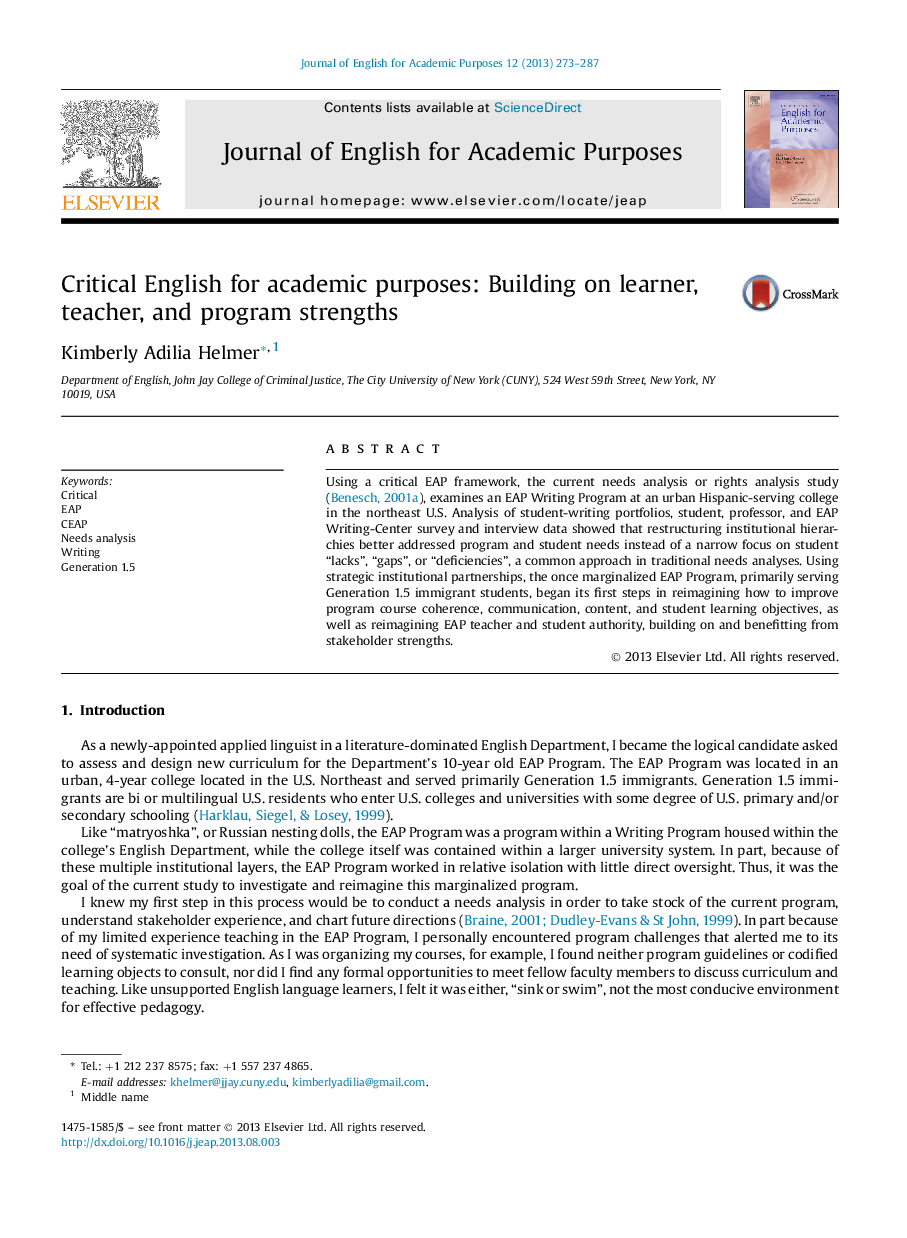| Article ID | Journal | Published Year | Pages | File Type |
|---|---|---|---|---|
| 360234 | Journal of English for Academic Purposes | 2013 | 15 Pages |
•Used critical EAP theoretical and methodological framework.•Findings found EAP Writing Program marginalization.•Restructuring institutional hierarchy better addressed program and student needs.•Strategic college partnerships created greater program cohesion and communication.•Curriculum redesign built on EAP Program stakeholder strengths not learner lacks.
Using a critical EAP framework, the current needs analysis or rights analysis study (Benesch, 2001a), examines an EAP Writing Program at an urban Hispanic-serving college in the northeast U.S. Analysis of student-writing portfolios, student, professor, and EAP Writing-Center survey and interview data showed that restructuring institutional hierarchies better addressed program and student needs instead of a narrow focus on student “lacks”, “gaps”, or “deficiencies”, a common approach in traditional needs analyses. Using strategic institutional partnerships, the once marginalized EAP Program, primarily serving Generation 1.5 immigrant students, began its first steps in reimagining how to improve program course coherence, communication, content, and student learning objectives, as well as reimagining EAP teacher and student authority, building on and benefitting from stakeholder strengths.
